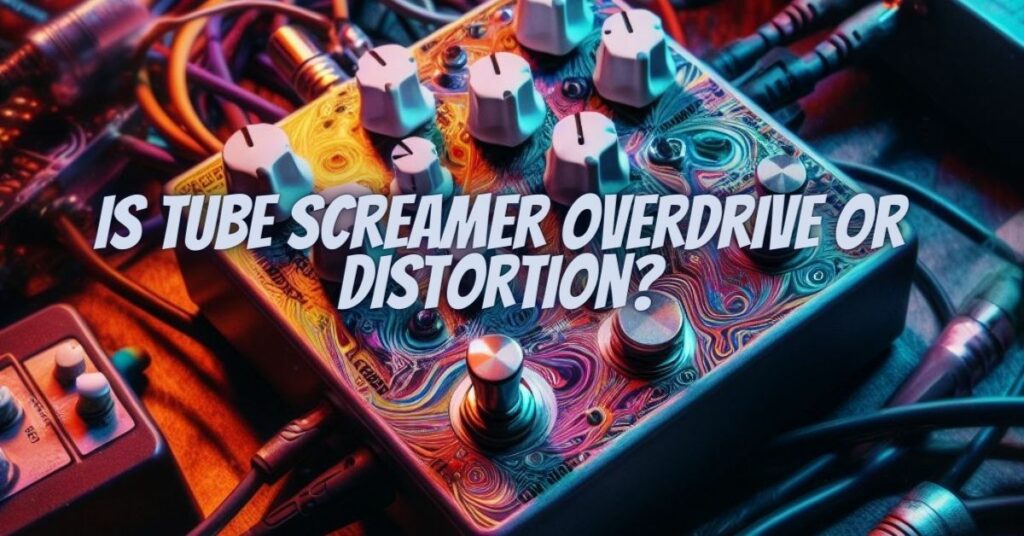The Ibanez Tube Screamer is a legendary pedal in the world of guitar effects. Loved by countless guitarists for its ability to shape their tones, the Tube Screamer has been the source of much debate and discussion when it comes to categorizing its sound. Is it an overdrive pedal, or is it a distortion pedal? In this article, we’ll explore the characteristics of the Tube Screamer and determine whether it leans more towards overdrive or distortion, settling the age-old debate.
The Tube Screamer’s Origins
The Tube Screamer made its debut in the late 1970s and quickly gained a reputation for its unique sound. Guitarists worldwide embraced it, and it became a crucial element in shaping guitar tones across various musical genres.
The Overdrive Argument
One camp of guitarists firmly believes that the Tube Screamer is primarily an overdrive pedal. Here are the key arguments to support this perspective:
- Gain Range: The Tube Screamer typically features a moderate gain range. Overdrive pedals are characterized by their ability to push an amplifier into overdrive without drastically altering the core tone. The Tube Screamer excels at precisely this, enhancing the natural characteristics of your guitar and amp.
- Transparency: Overdrive pedals, like the Tube Screamer, are known for their transparency. This means that they maintain the essential characteristics of your original tone, allowing it to shine through while adding a warm and harmonically rich overdrive.
- Touch Sensitivity: The Tube Screamer’s touch sensitivity is a hallmark of overdrive. It responds to your playing dynamics, making it an expressive tool that allows you to control the level of overdrive through your picking and fretting techniques.
- Tone Shaping: Overdrive pedals, including the Tube Screamer, often feature tone control knobs that allow you to shape the balance of frequencies. This feature enhances the pedal’s ability to work as an overdrive.
The Distortion Argument
On the other hand, some guitarists argue that the Tube Screamer can also be seen as a distortion pedal. Here’s the reasoning behind this perspective:
- Sustain: The Tube Screamer is capable of delivering a healthy amount of sustain, a characteristic often associated with distortion. Distortion pedals are known for their ability to produce long, singing sustain, which the Tube Screamer can achieve, especially when the gain is pushed to higher levels.
- Compression: Distortion pedals introduce compression into the signal, which limits the dynamic range and adds a compressed, sustained quality to the sound. The Tube Screamer, particularly at higher gain settings, exhibits this compression effect.
The Verdict: Overdrive or Distortion?
The Tube Screamer’s versatility and unique tonal characteristics make it a bit of both, which is why the debate continues. It occupies a middle ground between overdrive and distortion, offering the best of both worlds to guitarists.
In essence, the Tube Screamer leans towards overdrive due to its moderate gain range, transparency, touch sensitivity, and tone-shaping capabilities. However, it also exhibits distortion-like qualities, such as sustain and compression, when the gain is pushed to its limits.
Ultimately, the Tube Screamer’s categorization matters less than its ability to shape your tone in a way that’s both responsive and harmonically rich. Whether you consider it an overdrive or a distortion pedal, the Tube Screamer remains a timeless classic that has left an indelible mark on the world of guitar effects. Its unique sound has earned it a place on countless pedalboards and in the hearts of guitarists worldwide.


